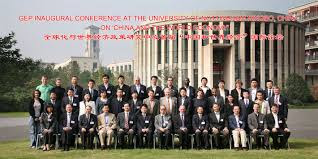Education System
Turkish education system is under the supervision and control of the state, namely the Ministry of National Education. According to the Constitution of the Republic of Turkey, everyone has the right to receive education. Education is compulsory from ages 6 to 14 and free in state schools. The country's primary schools currently have a 98 percent participation rate.
The academic year in Turkish education institutions generally begins in the mid-September or early October and continues to May or early June. There is also a two-week winter break in February.
Stages of the Education System
Pre-School Education: Optional kindergarten education, up to 6 years of age.
Primary Education: Compulsory and free basic education for eight years (5 years elementary + 3 years secondary), 6-14 years of age.
Secondary Education: 4 years of High School (Lise), or Vocational High School education, 15-17/18 years of age. Some schools might have an additional year of language study. High schools are mostly owned by the government and provide free education.
Higher Education: 4 years of University, or 2 years at Higher Vocational Schools. Some schools have an additional year of language study. Under normal circumstances, Master's study lasts 2 years; PhD 3-5 years. This category includes all educational institutions which will provide post-secondary education. They are under the supervision of Higher Educational Council (YOK).
Types of High Schools
Public High Schools (“Normal Liseler” or “Duz Liseler”): Any student who successfully completes 8 years of basic education can go onto these schools. Graduates of public high schools, if successful in the nationwide University Entrance Examination (ÖSS), can go onto higher education institutions. Graduates are awarded with the Lise Diploması.
Vocational High Schools (Meslek Liseleri): Some of these schools may take an additional year to complete. Graduates can automatically go on to higher vocational schools (Meslek Yüksek Okulları - 2 Year Vocational Colleges) in their respective fields of study if they wish. Alternatively, if successful in the university entrance examination, they can go onto 4-year schools in their respective fields.
Anatolian High Schools (Anadolu Liseleri): One year of English study followed by 3 years of regular high school education, additional hours for English. Math and Science lessons at these schools are sometimes taught in English. Lessons at some Anatolian high schools are taught in either German or French.
Super High Schools (Super Liseler): The difference between these and normal high schools is one extra year of English study. They differ from Anatolian high schools in that the language of instruction for math and science courses is always Turkish and less hours are given to English lessons.
Science High Schools (Fen Liseleri): These are special public schools for students who have exceptional aptitude in the sciences. These very competitive high schools train students specifically for higher education in the sciences, technical and medical fields. There is also Anatolian Science High Schools (Anadolu Fen Liseleri), where the medium of instruction for math and sciences is sometimes in English.
Private High Schools (Ozel Liseler): Most private high schools charge very high tuition fees and are very competitive.
Types of Higher Education Institutions
State Universities (Devlet Universiteleri): The university system in Turkey is governed by the Higher Educational Council (YOK). Turkey has 104 state and 62 private universities (a total of 166 institutions of higher learning), 5 of which are located in the Turkish Republic of Northern Cyprus. Apart from the public and private universities, 8 foundation higher vocational schools serve the job market.
Generally, undergraduate education takes 4 years at universities, but some fields such as medicine (6 years), dentistry (5 years), and veterinary science (5 years) take longer. Turkish high school graduates go directly into fields of study such as medicine, law, dentistry and so on. No tuition fee is charged at public schools (devlet universitesi); students pay only a small basic fee. Students need to pass a nationwide University Entrance Exam (OSS) to enter a university. The graduates of 4-year programs are awarded with the Bachelor’s Degree (Lisans Diplomasi).
The medium of instruction at some state universities is English, German or French. Therefore, all correspondence with the university staff and applications to the faculties can be done in English, German or French. However, instruction language at state universities is mostly Turkish. When entering the exam of the university, the knowledge of Turkish is not necessary. Those who pass the exams, and have only a little knowledge of Turkish, are considered to take one year of language foundation to gain proficiency in the Turkish language.
Graduate-level programs consist of master and doctoral programs, coordinated by institutes in universities. Medical specialty programs are carried out within the faculties of medicine and the training hospitals owned by the Ministry of Health and the Social Security Institute (SGK).
Higher Vocational Schools (Meslek Yuksek Okulları): They offer 2 years of undergraduate study after high school and are very much like the community colleges in the USA. The only difference is that students cannot easily transfer to 4-year schools in the USA due to fewer places at the 4-year schools. Two year graduates must take the national Vertical Transfer Test (Dikey Gecis Sinavi) and have a high GPA to be able to apply to 4-year schools. The graduates of 2-year programs are awarded with the Associate’s or Pre-Bachelor’s Degree (On Lisans Diplomasi).
Private or Foundation Universities (Ozel / Vakif Universiteleri): In Turkey, private foundations obtained the right in 1984 to establish and develop universities. They were established with the fundamental aim of creating a centre of excellence in higher education and research. Private universities take more active initiatives to form and to select international and global educational and research networks.
The medium of instruction in most private universities is English. Almost all have one year of English study for those whose level of English is not found to be proficient upon entrance.
Private universities charge tuition fee ranging from USD 6,000-20,000. Although private institutions, they offer considerable financial aid; more than 40% of all students receive some sort of financial aid.

















